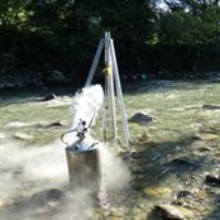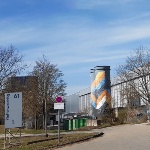Abstract
Colmation describes the process of fine sediment infiltration and accumulation in gravel river beds (sand, silt and clay). This clogging of the pore space affects the interstitial habitats of aquatic organisms such as macrozoobenthos and gravel spawning fish in a negative way. Existing methods to identify colmation are mainly subjective (e.g. mapping) and only give qualitative results, which are not reproducible. Other quantitative methods such as sediment sampling are not able to sufficiently describe the complexity of the colmation process. The aim of this study is to develop a method based on field measurements to assess colmation on a qualitative and a quantitative basis. Therefore, a multi-parameter method is developed to assess colmation based on the grain size distribution, the concentration of dissolved oxygen in the river bed, porosity and hydraulic conductivity. New measuring methods are developed to determine porosity and hydraulic conductivity since existing methods do not meet the requirements. The porosity is measured based on a photogrammetric approach frozen sediment cores using Structure from Motion (SfM). In order to determine the hydraulic conductivity at different vertical locations of the river bed, a modified pump test using a standpipe in combination with a deep double packer is applied. This novel method allows for the detection and localization of possible colmation layers in the river bed. Further analysis focus on possible combination and the suitability of the investigated parameters to describe colmation in a quantitative way.
Project manager
Deputy
Research assistants
Lydia Seitz
Duration
From: 2016.10.01
To: 2020.12.31



